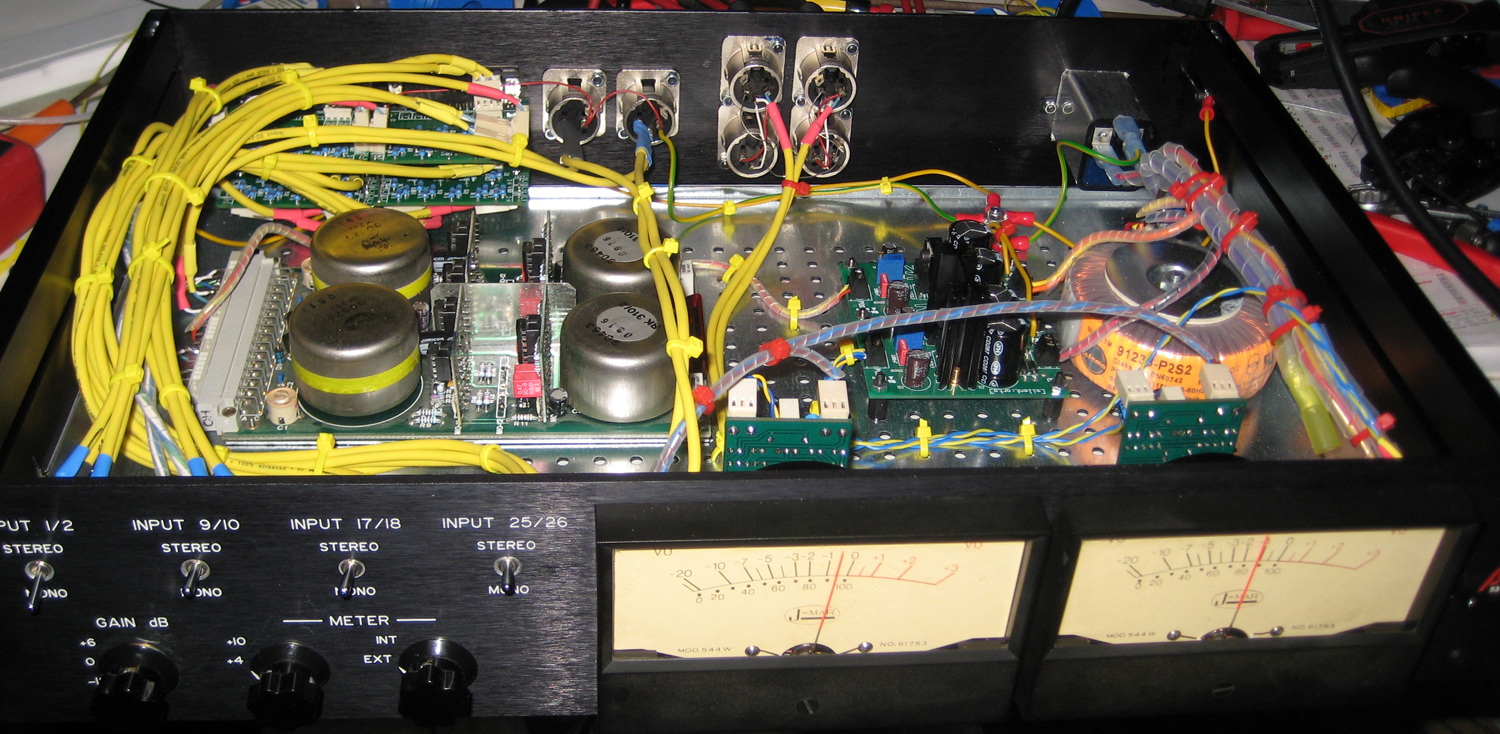Hi!
I'm on a similar build at the moment (24:2 with a V475 card), and i try to figure out how to add a stereo <-> mono switch for the first 6 channels.
First of all, i want to know if i get this straight: the symmetrically interconnection sends two signals with inverse polarity to the cards transformer, and after that the signal gets unsymmetric (sorry, i don't know the english word for that :

) within the op-amp. Because the signals are 100% correlated, there is a increase of +6dB (Voltage, i guess). Is that correct?
Secondly, if you want to add a mono Signal without using a stereo input, you have to 'clone' the signal for both channels. As far as i can tell, there will be another aditional increase of +6 dB because now there are 4 similar, 100% correlated signals.
My question would be: if my input resistant for the normal symmetrically signal is 5,1k, what should the input resistans for the mono signals be to get the same level? And do i need to put two resistors before the Y or after? as far s i can tell the second version would be the right one, because i don't shorting the symmetric bus. (see picture)
I really would appreciate your help!
Cheers, Tomess











